Human Orbital Spaceflights
![]()
International Flight No. 231STS-112Atlantis (26)111th Space Shuttle missionUSA |
 |
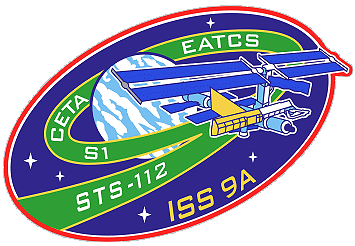 |
![]()
Launch, orbit and landing data
walkout photo |
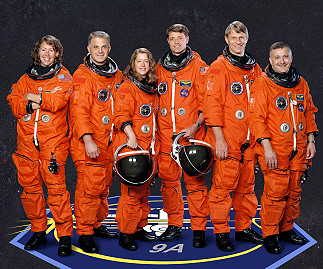 |
|||||||||||||||||||||||||||||||||
alternative crew photo |
alternative crew photo |
|||||||||||||||||||||||||||||||||
alternative crew photo |
||||||||||||||||||||||||||||||||||
alternative crew photo |
||||||||||||||||||||||||||||||||||
Crew
| No. | Surname | Given names | Position | Flight No. | Duration | Orbits | |
| 1 | Ashby | Jeffrey Shears "Bones" | CDR | 3 | 10d 19h 57m 49s | 170 | |
| 2 | Melroy | Pamela Ann | PLT, IV | 2 | 10d 19h 57m 49s | 170 | |
| 3 | Wolf | David Alexander "Bluto" | MS-1, EV-1 | 3 | 10d 19h 57m 49s | 170 | |
| 4 | Magnus | Sandra Hall | MS-2, FE, RMS | 1 | 10d 19h 57m 49s | 170 | |
| 5 | Sellers | Piers John | MS-3, EV-2 | 1 | 10d 19h 57m 49s | 170 | |
| 6 | Yurchikhin | Fyodor Nikolayevich | MS-4 | 1 | 10d 19h 57m 49s | 170 |
Crew seating arrangement
|
 |
|
||||||||||||||||||||||||||||
Hardware
| Orbiter : | OV-104 (26.) |
| SSME (1 / 2 / 3): | 2048-2 (5.) / 2051-2 (4.) / 2047-2 (8.) |
| SRB: | BI-115 / RSRM 87 |
| ET: | ET-115 (SLWT-20) |
| OMS Pod: | Left Pod 03 (30.) / Right Pod 04 (26.) |
| FWD RCS Pod: | FRC 4 (26.) |
| RMS: | 202 (9.) |
| EMU: | EMU No. 3017 (PLSS No. 1017) / EMU No. 3016 (PLSS No. 1016) |
Flight
|
Launch from Cape Canaveral (KSC) and
landing on Cape Canaveral (KSC), Runway 33. For the first time in space shuttle history, a "rocketcam" video camera mounted to the upper part of Atlantis' external tank returned NASA flight controllers with live video of the flight. The video was near perfect until the two solid rocket boosters were jettisoned. At that point, the exhaust from the separation motors fogged the camera lens and made the rest of the video difficult to see. Later, NASA announced that it was looking into a problem with explosive bolts that failed to fire properly during the launch. Immediately before the twin solid rocket boosters fired into life, only one set of pyrotechnics in ten explosive bolts exploded when commanded to do so. All 10 nuts exploded as planned, but NASA was interested in finding out an explanation for the unexpected anomaly. The major objective of STS-112 mission (ISS Assembly Flight 9A) was the delivery of the 45-foot-long (13.7 meters), 15- ton S-One (S1) Truss to the ISS. The S1 Truss was attached to the starboard side of the centerpiece truss, the S-Zero (S0) Truss, on which the Mobile Transporter (MT), Mobile Base System and the Canadarm2 robotic arm are mounted. The S1 Truss enabled the station to begin the outboard expansion of its rail system in preparation for the addition of new power and international science modules in the years to come. The large truss contains a new external cooling system for the station, a second S-Band communications system to provide enhanced and extended voice and data capability, a cart which will serve as a mobile work platform for future spacewalkers, two new external television cameras and the first Thermal Radiator Rotary Joint (TRRJ), which will provide the mechanical and electrical energy for rotating the station's heat-rejecting radiators based on various system requirements. Three spacewalks were carried out to install and activate the truss and its associated equipment. The S1 Truss was the second of 11 such truss structures that ultimately expanded the ISS to the length of a football field and increased its power through the addition of new photovoltaic modules and solar arrays. The 27,717 lb. (12,572 kg) S1 Truss is primarily an aluminum structure that is 45 feet (13.7 meters) long, 15 feet (4.6 meters) high and 6 feet (1.8 meter) wide. Both S1 and eventually P1 provide structural support for the Active Thermal Control System, the Mobile Transporter, a CETA cart and antennas. The S1 has an S-band system; the P1 a UHF system. Both trusses also have mounts for cameras and lights. Additionally, both S1 and P1 carry one radiator each as part of the space station's cooling and heating system. The radiators are deployed in orbit and use 99.9 percent pure ammonia. The radiator assembly also rotates to keep itself in the shade and away from the sun. Each radiator has 18 launch locks securing the assembly during launch. The locks were removed during a spacewalk before deploying the radiators. The addition of S1 also extends the Mobile Transporter (MT) rail line. The MT car travels along the length of the truss structure and carries spacewalkers, tools, construction items and the space station robotic arm. Flying aboard S1 is one of two CETA carts that move spacewalkers along the MT rails to worksites along the truss structure. The cart is manually operated by a spacewalker and can also be used as a work platform. S1 and P1 carry one cart each. The P1 Truss differs slightly from S1 and could be considered a mirror image. It has the same capabilities as the S1 except that P1 carries a UHF antenna. The P1 also carries a second CETA cart. Atlantis also delivered the Crew Equipment Translation Aid (CETA) Cart to the Space Station. The CETA cart was attached to the Mobile Transporter (launched on STS-110) to be used by assembly crews on later missions. CETA, one of the largest pieces of extravehicular activity (EVA) equipment built for the International Space Station (ISS), will accompany the first starboard truss, called S1, to orbit. This truss will become the backbone of the four solar wing assemblies and will incorporate many orbital replaceable units (ORUs). Installation and maintenance of these ORUs - for example batteries, the DC-to-DC converter, the Remote Power Controller Module, and the multiplexer/demultiplexer - is critical. At this time, NASA uses spacewalking crewmembers or robotics to repair or replace those units. The need for a work platform that could also provide the crew with a means of transporting themselves, the necessary tools and ORUs safely and easily along the truss became crucial. The SEAT-engineered CETA fulfills those requirements. The CETAs are launched as integrated parts of the S1 and P1 Truss segments. Once deployed on orbit, crewmembers can propel themselves and accompanying hardware manually along the Mobile Transporter (MT) rails. On orbit, the two CETA carts will be located one on each side of the MT for usage flexibility. If required, a cart may be moved to the other side of the MT to complement the other cart. The CETA has attachment points for other EVA hardware such as the ORU Transfer Device (OTD), also known as the Space Crane; Articulating Portable Foot Restraint (APFR); EVA Tool Stowage Device (ETSD); and a host of other small crew and equipment restraining tools. During ISS assembly operations, crewmembers will also use CETA as a work platform to reach 90 percent of the worksites safely. When not in use, the CETAs will attach to the MT for stowage and become part of a "train" that allows the Space Station Remote Manipulator System (the station's robotic arm) to move freely along the truss. On flight day 2 the Shuttle crew performed middeck ISS payload status checks, checkouts of the shuttle robotic arm, spacewalkers' spacesuits, rendezvous tools and prepared for transfer. The shuttle RMS was left powered on in preparation of the S1 installation activities on Flight Day 4. Atlantis' rendezvous and docking with the International Space Station began with the precisely timed launch of the shuttle on a course for the station. During the first two days of the mission, periodic engine firings gradually brought Atlantis to a point about 9 ½ statute miles behind the station, the starting point for a final approach to the station. About 2 ½ hours before the scheduled docking time on Flight Day 3, Atlantis reached that point, about 50,000 feet (15,240 meters) behind the ISS. There Atlantis' jets were fired in a Terminal Intercept (TI) burn to begin the final phase of the rendezvous. Atlantis closed the final miles to the station during the next orbit. As Atlantis closed in, the shuttle's rendezvous radar system began tracking the station and providing range and closing rate information to the crew. During the final approach, Atlantis could do as many as four small mid-course corrections at regular intervals. Just after the fourth correction was completed, Atlantis reached a point about half a mile below the station. There, about an hour before the scheduled docking, Commander Jeffrey Ashby took over manual control of the approach. Jeffrey Ashby slowed Atlantis' approach and flew to a point about 600 feet (182.9 meters) directly below the station, from which he began a quarter-circle of the ISS, slowly moving to a position in front of the complex, in line with its direction of travel. Pilot Pamela Melroy helped Jeffrey Ashby in controlling Atlantis' approach. Mission Specialist David Wolf also played key roles in the rendezvous, using a handheld laser ranging device and operating the docking mechanism to latch the station and Atlantis together after the two spacecraft make contact. Mission Specialist Sandra Magnus was backup on the docking system and Mission Specialist Piers Sellers filled the backup role with the handheld laser ranging device. Jeffrey Ashby flew the quarter-circle of the station while slowly closing in on the complex, stopping at a point a little more than 300 feet (91.4 meters) directly in front of the station. From there, he began slowly moving Atlantis toward the station at about a tenth of a mile per hour (0.16 km/h). Using a view from a camera mounted in the center of Atlantis' docking mechanism as a key alignment aid, Jeffrey Ashby precisely centered the docking ports of the two spacecraft. Jeffrey Ashby flew to a point where the docking mechanisms were 30 feet (9.14 meters) apart, and paused to check the alignment. For Atlantis' docking, Jeffrey Ashby maintained the shuttle's speed relative to the station at about one-tenth of a foot per second (3 centimeters per second) (though both spacecraft are traveling at about 17,500 mph = 28,163 km/h), and kept the docking mechanisms aligned to within a tolerance of three inches (7.6 centimeters). When Atlantis made contact with the station, preliminary latches automatically attached the two spacecraft. Immediately after Atlantis docked on October 09, 2002, the shuttle's steering jets were deactivated to reduce the forces acting at the docking interface. Shock absorber-type springs in the docking mechanism dampened any relative motion between the shuttle and the station. Once that motion between the spacecraft had stopped, David Wolf secured the docking mechanism, sending commands for Atlantis' docking ring to retract and to close a final set of latches between the shuttle and station. The successful docking set the stage for the opening of the hatches and the start of seven days of joint operations between Atlantis' crew and the resident crew on the ISS, Expedition 5 Commander Valeri Korzun and Flight Engineers Peggy Whitson and Sergei Treshchyov. Following pressure checks, station science officer Peggy Whitson asked Commander Jeffrey Ashby if he had brought the salsa that she had asked for. When Jeffrey Ashby replied that he had, Peggy Whitson said "OK, we'll let you in". The hatches between Atlantis and the Space Station were opened at 16:51 UTC and astronaut Jeffrey Ashby floated into the Destiny Module and immediately embraced Peggy Whitson. Mission Specialist Sandra Magnus followed next, followed by the rest of Atlantis' STS-112 crew members. They were greeted by the three-member station crew. The following day, David Wolf and Piers Sellers began spacewalk preparations while Sandra Magnus and Peggy Whitson used the Canadarm2 from inside Destiny to grapple the huge S1 Truss, lifting it out of Atlantis' payload bay and maneuvering it for its installation at the starboard end of the S0 Truss. Capture bolts structurally mated the two trusses after a claw-like device on the starboard side of the S0 Truss grabbed a fixture on the S1 segment. The procedure was timed so that David Wolf and Piers Sellers did not exit the station's Quest airlock to begin their first spacewalk until the mating process was complete. The first EVA was performed by David Wolf and Piers Sellers on October 10, 2002 (7h 01m) to attach power, data and fluid connections between the newest segment of the station's backbone - The Starboard One (S1) Truss and the first (S0) Truss segment. Using the Canadarm2 robot arm Sandra Magnus and ISS-5 crewmember Peggy Whitson positioned the S1 at the starboard end before. David Wolf and Piers Sellers also deployed an antenna und released restraints on a handcar. Toward the end of the S1 attachment, David Wolf attached and entered a foot restraint on the end of the station's Canadarm2. Sandra Magnus maneuvered him to the cable tray atop S1. Once he was clear, Piers Sellers moved to the forward side of S1, where he released the five radiator launch locks nearest the S0 connection. Meanwhile, David Wolf opened thermal covers over cable trays atop S0 and S1, then demated connectors on the S0 side from temporary attachment points and connected their free ends to receptacles on S1. Piers Sellers opened a circuit breaker, then closed it once David Wolf completed those connections. After those tasks, David Wolf and Piers Sellers collaborated to deploy the S-Band Antenna Support Assembly (SASA). The new component increased the S-band data and voice communications capability from the ISS to ground controllers. David Wolf, at the end of Canadarm2, was maneuvered to SASA's launch position at the center of truss between the two keel pin assemblies of S1. There he used a Pistol Grip Tool (PGT) to release four launch bolts and two mast bolts. He and Piers Sellers removed the SASA from its launch position and David Wolf carried it, while Sandra Magnus maneuvered him on the arm to the installation site near the inboard end of S1. Piers Sellers, meanwhile, moved to the installation site and released two clamps. David Wolf soft docked the SASA to its support bracket, then tightened a stanchion bolt about nine turns until it dropped out of its launch position. Still using the PGT, he tightened that bolt about 21 more turns until it reached a hard stop, completing the SASA physical installation. The next task for David Wolf was to demate the ends of four connectors and install them to provide power and data links to the SASA. Piers Sellers then removed a shroud covering the antenna, bundled it and temporally stowed it. Finally, David Wolf released four SASA gimbal locks with the PGT and rotated them away from SASA's high-gain antenna. Then Piers Sellers handed David Wolf the shroud bundle, and David Wolf took it with him on the arm to the launch position of the Crew and Equipment Translation Aid (CETA). The CETA is a kind of handcar for the truss' rail line, with which spacewalkers eventually will be able to push themselves and equipment along much of the 356-foot (108.5 meters) length of the completed main truss. David Wolf released a brake shaft launch lock with the PGT and then used it to release two portside brake handle launch clamp bolts. He deployed dynamic and parking brake handles and lock sliders. That complete, he released four bolts that will free two portside launch handle brackets, and put the brackets in a trash bag. After setting the CETA parking brake, David Wolf turned his attention to its main launch bolts. He released four scissor bolts, breaks the torque on four launch restraint bolts and fully released four others, stowing them in the trash bag. Then he released the CETA parking brake and pushed it along its rails to a point near the center of S0. There he repeated the portside work on CETA's starboard side. During David Wolf's CETA activity, Piers Sellers first released three more radiator beam launch locks on the new S1 truss. Then he demated the ends of a total of nine power, video and data cables from their temporary positions on S0 and mated them to receptacles on S1. Installation of the S1's outboard nadir external camera occupied David Wolf and Piers Sellers for about the next hour and 15 minutes. David Wolf removed the camera, launched on Atlantis' middeck, and the tilt pad cover from the camera's light before taking the camera from its large bag. He then maneuvered with the assembly to the starboard keel, where he attached the assembly, driving its center jacking bolt about 28 turns with a PGT. David Wolf next released two camera stanchion launch restraint bolts, then slided the camera out of its keel interface and moved it to its installation location. With a PGT he tightened a stanchion bolt about nine turns until it dropped out of its launch position, then tightened it about another 21 turns until it reached a hard stop. The spacewalkers then mated eight connectors to take power, data and images to and from the camera. David Wolf and Piers Sellers then temporarily removed the camera so they could install four more connectors. David Wolf reinstalled it using the PGT to tighten its center-jacking bolt about 28 turns. Near the end of the first spacewalk, David Wolf connected a series of cables linking S0 and S1 on the Utilities Nadir Tray. The spacewalkers each released five Radiator Beam Launch Locks. On flight day 5 they began transfer operations between the vehicles and prepared for mission's second spacewalk. The crew moved a number of scientific experiments back and forth between the shuttle and the ISS to return completed experiments to Earth and deploy new experiments at the ISS. Transfer items included a set of liver cell tissue samples from an experiment studying the function of human liver cells in microgravity, moved from the station onto the shuttle for return to Earth. Payload experiments such as Marshall Space Flight Center's protein crystal growth thermal enclosures for growing high-quality protein crystals in micro-gravity experiments were moved to and from the station. Seven water containers were transferred to the station. Commander Jeffrey Ashby initiated a Nitrogen transfer process that moved about 15 pounds of the gas from Atlantis to the station by the end of the day. The second EVA by Piers Sellers and David Wolf occurred on October 12, 2002 (6h 04m), in which they continue outfitting the S1-truss to bring it to life. They connected ammonia cooling system lines and mount another external video camera package on the hull of the Unity node, among other works. For the second of the three spacewalks, Piers Sellers ride at the end of the arm and David Wolf was the free-floater. After about half an hour for setup after leaving the airlock, Piers Sellers had to ride the arm to a position near the left side of the Z1 truss and its junction with the U.S. laboratory Destiny. David Wolf made his way to the aft side of the Z1-P6 truss junction. There, both astronauts removed insulation covers on booties covering quick disconnect (QD) fittings in ammonia lines, part of the station's thermal cooling systems. Piers Sellers installed two one-inch "spool positioning devices" (SPDs) to better match the position of the bodies of two QDs at the base of the Z1 truss while David Wolf conducted a similar task at the Z1-P6 truss interface. The installation involved rotating the QD locking collar to the unlock position, attaching a circular section of the SPD to the QD, then adding a clamp-like device to tension it there before finally checking the SPD installation and performing a pull test on the QD. Next, David Wolf maneuvered to the CETA cart, where he spent about 25 minutes releasing the starboard brake system as well as the swing arm and coupler restraints. Piers Sellers, meanwhile, had to ride the arm to the ammonia tank assembly at the inboard end of S1. There he demated two dustcaps and installed the ends of two umbilicals on the Ammonia Tank Assembly (ATA). The umblicials on the Nitrogen Tank Assembly (NTA) on the outboard side of S0 are attached there with QDs, which he used to make the new connection. He reinstalled the dustcaps he removed from the ATA on the fittings that held the QDs on the NTA. The next task was a repeat of the camera group installation on the first spacewalk, involving both David Wolf and Piers Sellers. This installation, however, was on the U.S. laboratory Destiny. Installation steps were virtually identical, though the players were reversed with Piers Sellers still affixed at the end of the arm. With the camera installation complete, Piers Sellers left the arm's foot restraint and moved to the CETA light stanchion to retrieve a bag of SPDs, then moved to the starboard camera group he and David Wolf installed two days before to temporarily stow the bag. Then he moved to the inboard end of S1 where he began installing SPDs on one-inch ammonia lines on Radiator Beam Valve Module (RBVM) No. 1. The RBVM allows or prevents transfer of ammonia supply or return to or from the Radiator ORU, allows remote controlled venting of the radiator fluid loop for replacement of the Radiator ORU, and provides automatic pressure relief when the Radiator ORU is over pressurized. The RBVM also measures pressure and temperature of the fluid line, provides temperature measurements of Radiator ORU environment, provides instrumentation monitoring data, and receives valve actuation command data. There are 12 RBVMs on the space station. Each measures 17 in. x 27 in. x 6 in. (43.2 x 68.6 x 15.2 centimeters) and weighs 56 lbs. (25.4 kg). Meanwhile, David Wolf replaced Piers Sellers on the arm foot restraint. Sandra Magnus moved him to the CETA light station where he picked up his own SPD bag, then maneuvered to the outboard end of S1. There, he began installing SPDs on one-inch (2.5 centimeters) ammonia line QDs at RBVM No. 6. The two spacewalkers installed a total of 24 SPDs during this 2 ¼-hour task. The last task for the second spacewalk was releasing Radiator Beam Launch Locks. Both David Wolf and Piers Sellers used pistol grip tools to release the launch locks, turning each of three bolts 60 to 62 rotations. On flight day 7 the shuttle crew reconfigured and initiated an oxygen transfer to the high-pressure gas tanks on Quest in the morning. Oxygen was transferred for about eight hours. Once the oxygen transfer was completed, a reconfiguration to the shuttle oxygen prebreather protocol was done late in the afternoon. The third and final EVA was again performed by Piers Sellers and David Wolf on October 14, 2002 (6h 36m) to complete the installation and checkout of the newly installed truss segment. The first job on the flight's final spacewalk was removal and replacement of the Interface Umbilical Assembly (IUA). The IUA is installed with the Trailing Umbilical System (TUS) on the Mobile Transporter (MT), the railcar that supports the base for the station's robotic arm. The TUS incorporates a reel for the trailing umbilical, a power and data cable linking the station and the MT as it moves along the tracks on the truss. Program officials decided to replace the IUA after a bolt securing a backup cable cutter could not be removed during its initial installation on the STS-110 mission April 2002. David Wolf and Piers Sellers moved from the airlock to the MT, on the tracks of S0. They first removed the TUS cable, with Piers Sellers keeping it under tension while being careful not to bend or crimp it. David Wolf loosened three cable connections, then removed the cable cutter before temporarily stowing the TUS cable. To remove the IUA itself, David Wolf detached four cable connections linking it to the MT. Then Piers Sellers, using a pistol grip tool, removed four bolts attaching the IUA assembly to the MT. Finally, he removed the IUA from its "soft dock" connection and handed it to David Wolf. Installation of the new IUA was basically the same operation in reverse, with Piers Sellers soft docking the new unit and attaching it to the MT with four bolts. David Wolf then made the seven connections between the IUA, the MT and the TUS. David Wolf and Piers Sellers moved to a point at the junction of S0 and S1 for the next activity, the installation of fluid jumpers to enable ammonia coolant to flow between the two truss segments. Piers Sellers released two jumpers on S0, then moved into the Canadarm2 foot restraint for a ride to the jumper install position at the lower segment-to-segment utility carrier. There he joined David Wolf, waiting nearby in a portable foot restraint. David Wolf mated and installed SPDs on two jumper connections on the S0 side, while Piers Sellers performed a similar task on the S1 side. Each connection involved a pull test and a three-minute leak check. David Wolf reinstalled thermal covers while Piers Sellers closed S1 and S0 utility tray shrouds. Then Piers Sellers, still on the arm, and David Wolf, moved on to S1's port drag link. They worked together to release that drag link, a large metal rod used as a launch restraint. David Wolf released a bolt attaching the drag link to the keel, while Piers Sellers released a similar bolt attaching the drag link to S1. Piers Sellers took the drag link to its stowage location on the S1 framework and attached it. While Piers Sellers attached the drag link, David Wolf moved to the port keel pin, another launch support device, first tightening two keel scissor bolts, then releasing two keel pin bolts and rotating keel pin latches free. Once rotated David Wolf reinstalled the bolt, removed two pit-pins. Piers Sellers reinstalled the keel pin a nearby. The processes were repeated on the S1 starboard drag link and keel pin. David Wolf and Piers Sellers, now off the arm, moved to the CETA handrail cart where each took a 1 ½ -inch (3.8 centimeters) SPD to be installed on ammonia lines near a Thermal Radiator Rotary Joint on S0. David Wolf released bolts securing that joint in its launch position. The last task was to perform a test of the Segment-to-Segment Attachment System (SSAS) at the outboard end of S1. The SSAS there consists of a remotely operated claw and three motorized bolt assemblies. David Wolf depressed ready to latch indicators on each for several seconds. This verified the readiness of the S1 segment to receive other starboard truss components on future flights. Finally, while David Wolf did the SSAS test, Piers Sellers reconfigured the Squib Firing Unit (SFU) power connector. The SFU is used to release radiator panels for deployment. STS-112 also carried several science experiments to the station including the Plant Generic Bioprocessing Apparatus (PGBA), Commercial Generic Bioprocessing Apparatus (CGBA), the Protein Crystal Growth Single-locker Thermal Enclosure System housing the Protein Crystallization Apparatus for Microgravity (PCG-STES-PCAM) and samples for the Zeolite Crystal Growth Furnace (ZCG) experiment. The next day, Flight Day 9, the shuttle and station crews completed some additional transfer work and get-ahead tasks for future assembly flights before saying goodbye to one another on Flight Day 10 as the hatches were closed between the vehicles. Once Atlantis was ready to undock, David Wolf sent a command to release the docking mechanism. At initial separation of the spacecraft, springs in the docking mechanism gently pushed the shuttle away from the station. Atlantis' steering jets were shut off to avoid any inadvertent firings during this initial separation. Once Atlantis was about two feet (61 centimeters) from the station, with the docking devices clear of one another, Pamela Melroy turned the steering jets back on and fired them to very slowly move away. From the aft flight deck, Pamela Melroy manually controlled Atlantis within a tight corridor as she separated from the ISS, essentially the reverse of the task performed by Jeffrey Ashby just before Atlantis docked. Atlantis continued away to a distance of about 450 feet (137.2 meters), where Pamela Melroy began a close flyaround of the station, circling the complex almost one and a quarter times. Pamela Melroy passed a point directly above the station, then behind, then underneath, then in front and then reached a point directly above the station for a second time. At that point, passing above the orbiting laboratory, Pamela Melroy fired Atlantis' jets for final separation from the station. |
EVA data
| Name | Start | End | Duration | Mission | Airlock | Suit | |
| EVA | Sellers, Piers | 10.10.2002, 15:21 UTC | 10.10.2002, 22:22 UTC | 7h 01m | STS-112 | ISS - Quest | EMU No. 3011 |
| EVA | Wolf, David | 10.10.2002, 15:21 UTC | 10.10.2002, 22:22 UTC | 7h 01m | STS-112 | ISS - Quest | EMU No. 3017 |
| EVA | Sellers, Piers | 12.10.2002, 14:31 UTC | 12.10.2002, 20:35 UTC | 6h 04m | STS-112 | ISS - Quest | EMU No. 3011 |
| EVA | Wolf, David | 12.10.2002, 14:31 UTC | 12.10.2002, 20:35 UTC | 6h 04m | STS-112 | ISS - Quest | EMU No. 3017 |
| EVA | Sellers, Piers | 14.10.2002, 14:11 UTC | 14.10.2002, 20:47 UTC | 6h 36m | STS-112 | ISS - Quest | EMU No. 3011 |
| EVA | Wolf, David | 14.10.2002, 14:11 UTC | 14.10.2002, 20:47 UTC | 6h 36m | STS-112 | ISS - Quest | EMU No. 3017 |
Photos / Graphics
 |
 |
 |
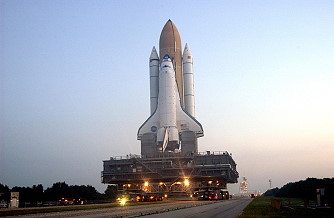 |
 |
 |
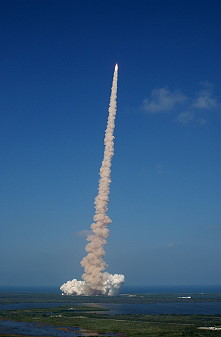 |
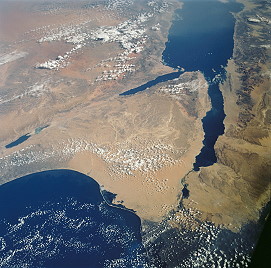 |
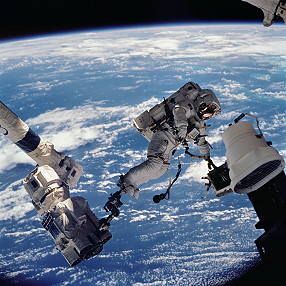 |
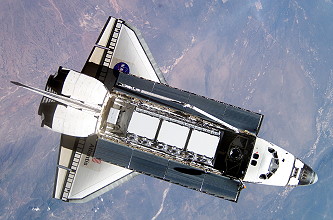 |
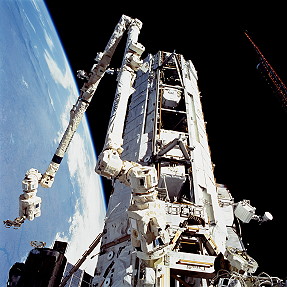 |
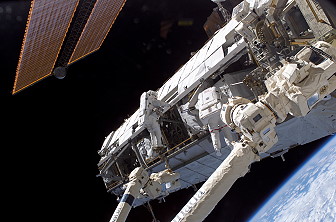 |
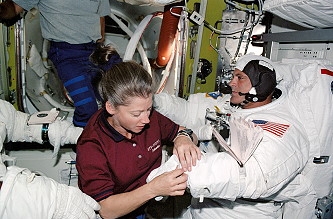 |
 |
 |
 |
 |
 |
more EVA photos |
|
| © |  |
Last update on March 27, 2020.  |
 |